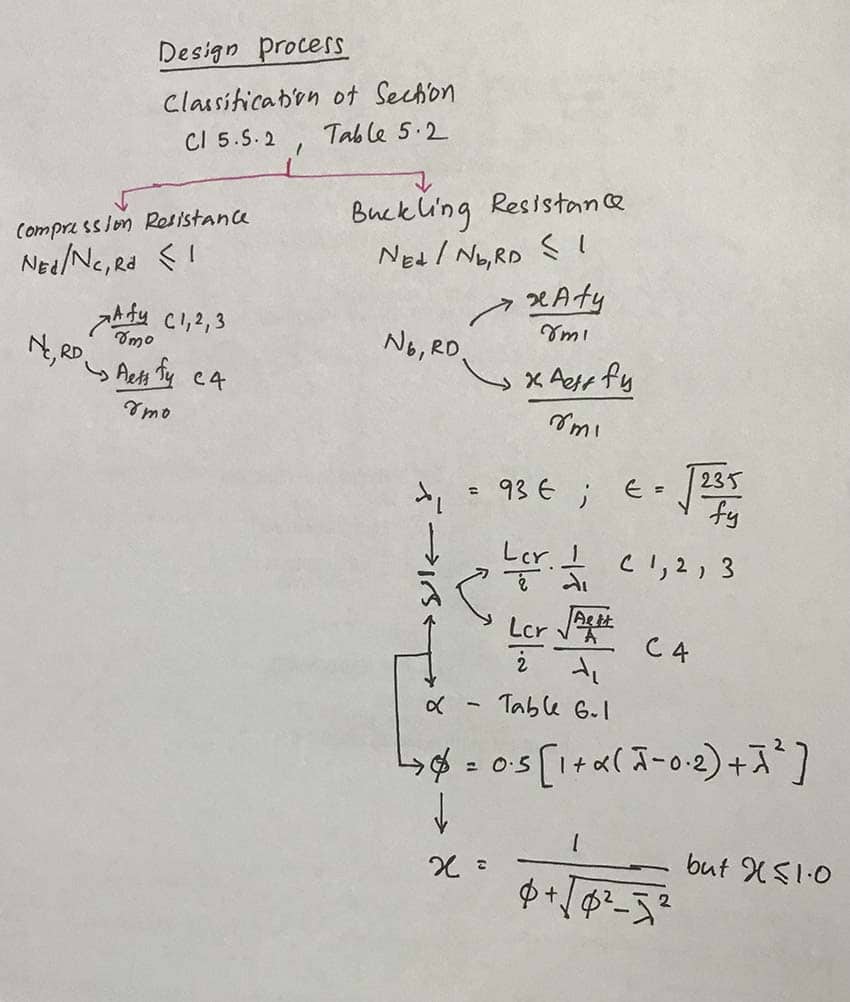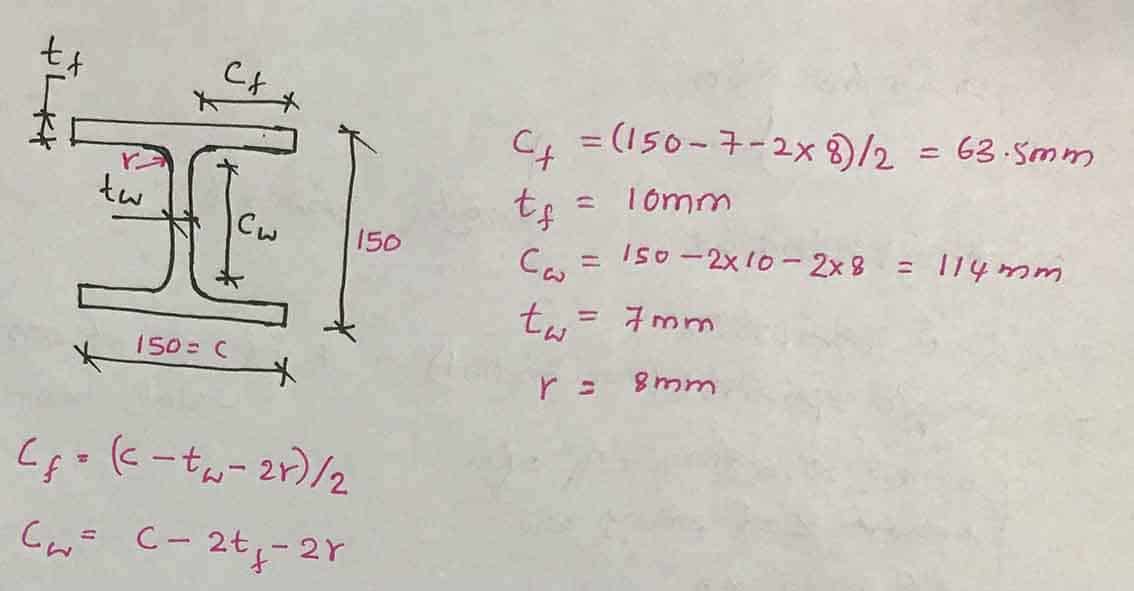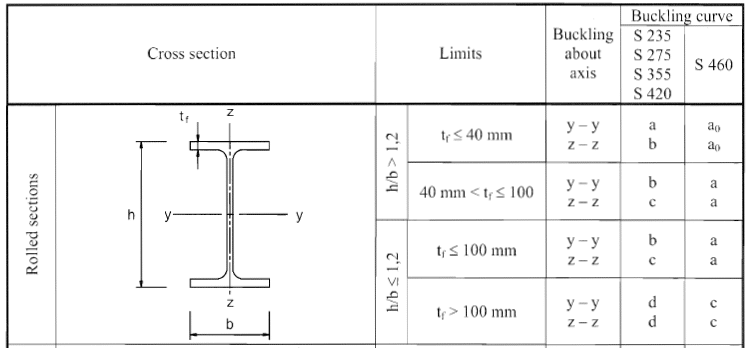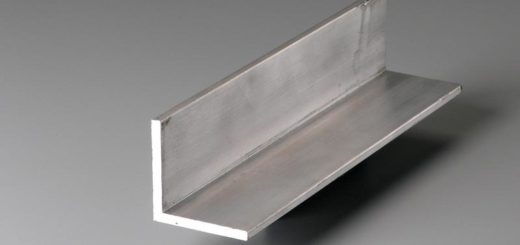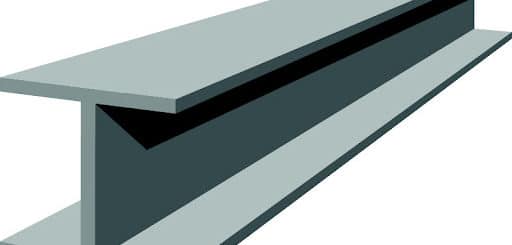Steel Column Design EC3 Worked Example
Steel column design according to Eurocode 3, EN 1993-1-1, is discussed in this article by a worked example. Clarifications on design are done by referring to the relevant clauses of the code.
A detailed explanation of the steel column design is discussed in the article steel column design using Eurocode 3.
The design process given in the above article is as follows.
Let’s start the design process with a worked example.
Design Data
- Size of the column 150x150x 31.1 kg/m
- Steel Grade S275
- Height of the column 3m
- Axial load 500 kN
- Consider pin ended column for simplicity in this example
Classification of Section
Let’s find the strength parameters.
t < 40mm
From Table 3.1 of EN 1993-1-1,
fy = 275 N/mm2
ε = √(235/fy) = √(235/275) = 0.92
From Clause 6.1,
γm0 = 1.0
γm1 = 1.0
A = 39.65 cm2
We can calculate the slenderness limits.
Flange
Cf/tf = 63.5 / 10 = 6.35 < 9ε = 9 x 0.92 = 8.82; Section Class 1
Web
Cw/tw = 114 / 7 = 16.3 < 33ε = 33 x 0.92 = 30.36; Section Class 1
- Plastic Resistance or Resistance of Cross Section, Nc, Rd
- Non-Slender Sections: Class 1
Nc,Rd = Afy / γm0 = 3965 x 275 / 1 = 1090.4 kN
After calculating the resistance, the following capacity check shall be done.
NEd = 500 kN
NEd / Nc,Rd = 500 / 1090.4 = 0.46 < 1
Cross section satisfy the plastic resistance.
- Buckling resistance, Nb,Rd
Firstly, calculate the buckling resistance depending on the class of the section.
let’s follow the procedure given in the design process.
λ1 = 93.9ε = 93.9 x 0.92 = 86.4
In column designs, we have to consider the resistance around each axis[ Y-Y and Z-Z].
i = radius of gyration
Iyy = 6.4 cm
izz = 3.77 cm
Lcr = Buckling Length
Sine the both ends of the column is pined,
Lcr = 1.0 x L = 3 m
λ¯ = Lcr / i λ1
Y-Y axis; λ¯ = Lcr / i λ1 = 3000 / ( 64 x 86.4 ) = 0.54
Z-Z axis; λ¯ = Lcr / i λ1 = 3000 / ( 37.7 x 86.4 ) = 0.92
Let’s find the α – imperfection factor from Table 6.1 of EN 1993-1-1
Find the Buckling Curve
h / b = 150 / 150 = 1 < 1.2
tf = 10mm < 100 mm
Now let’s refer to the part of Table 6.2 of EN 1993-1-1,
Thus, the bucking curve are as follows
Y-Y axis – b
Z-Z axis – c
From Table 6.1
| Buckling Curve | a0 | a | b | c | D |
| Imperfection factor α | 0.13 | 0.21 | 0.34 | 0.49 | 0.76 |
α at Y-Y axis = 0.34
α at Z-Z axis = 0.49
Now calculate, Ø
Ø = 0.5 [ 1 + α( λ¯ – 0.2) + λ¯2]
About Y-Y axis
Ø = 0.5 [ 1 + 0.34(0.54 – 0.2) + 0.542] = 0.7
About Z-Z axis
Ø = 0.5 [ 1 + 0.49(0.92 – 0.2) + 0.922] = 1.1
Calculate Reduction factor, χ
χ =1 /[ Ø + √(Ø2 – λ¯2 )] ≤ 1.0
About Y-Y axis
χ =1 /[ 0.7 + √(0.72 – 0.542 )] = 0.873 < 1.0
About Z-Z axis
χ =1 /[ 1.1 + √(1.12 – 0.922 )] = 0.587 < 1.0
The lowest χ is the critical axis against buckling and less buckling resistance is available.
Thus,
χ = 0.587
Now calculate Buckling Resistance Nb,Rd,
Nb,Rd = χ A fy / γM1 – Non slender – Class 1
Nb,Rd = 0.587 x 3965 x 275 / 1 = 640 kN
- Capacity Check
NEd / Nb,Rd ≤ 1.0
NEd / Nb,Rd = 500 / 640 = 0.781 < 1
Section is Ok.
As additional information, you may refer to the article published in Wikipedia Eurocode 3: Design of Steel Structures.

